Why Customer Service Ticketing Systems Matter for Businesses
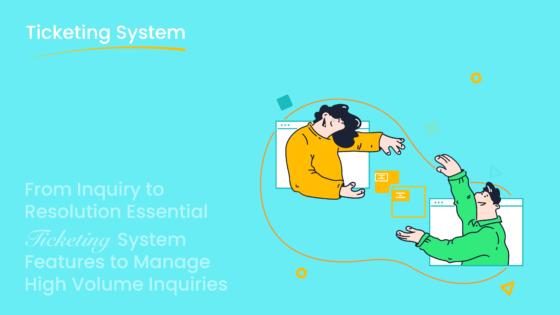
A customer service ticketing system plays a vital role in improving how businesses handle customer inquiries. It organizes communication, ensuring no issue gets overlooked. Faster resolutions reduce customer frustration and increase satisfaction. For example, these systems flag high-priority tickets, enabling quicker responses and building loyalty. Automation also streamlines workflows, helping your team deliver consistent service quality.
Data-driven insights from the best customer service ticketing systems refine strategies. Performance analytics highlight areas for improvement, boosting metrics like net promoter score (NPS). Companies like Sobot offer advanced solutions that unify communication channels, automate ticket routing, and provide actionable analytics. These features make managing customer service more efficient and scalable.
What Is a Customer Service Ticketing System?
Definition and Purpose
What is a ticket in customer service?
A ticket in customer service represents a record of a customer’s inquiry, issue, or request. It acts as a digital placeholder that tracks the progress of resolving the concern. Each ticket contains essential details like the customer’s contact information, the nature of the issue, and the steps taken to address it. This ensures that no query gets lost and every customer receives the attention they deserve.
The primary goal of a customer service ticketing system
A customer service ticketing system serves as a centralized tool to manage and resolve customer inquiries efficiently. It organizes tickets, streamlines communication, and ensures timely resolutions. By simplifying operations for support teams, it enhances the overall customer experience. For instance, businesses using such systems often see improved response times and higher customer satisfaction rates. According to industry benchmarks, companies handling an average of 17,630 tickets monthly benefit significantly from these systems, as they reduce manual effort and improve service quality.
Key Features of the Best Customer Service Ticketing Systems
Centralized communication hub for customer inquiries
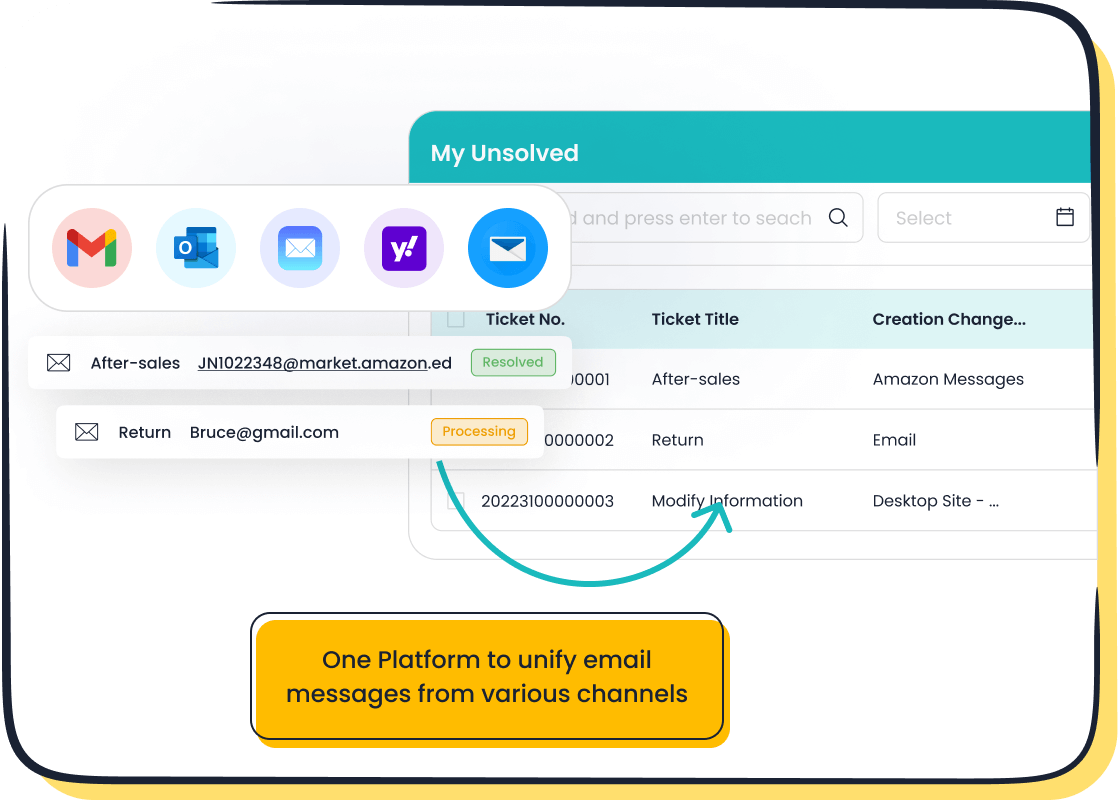
The best customer service ticketing systems consolidate all customer interactions into a single platform. This unified approach improves response times and team coordination. For example, Sobot’s ticketing system integrates email, voicemail, and chat, ensuring seamless communication. A centralized hub also provides transparency, keeping customers informed throughout the ticket lifecycle.
Automation and prioritization of tasks
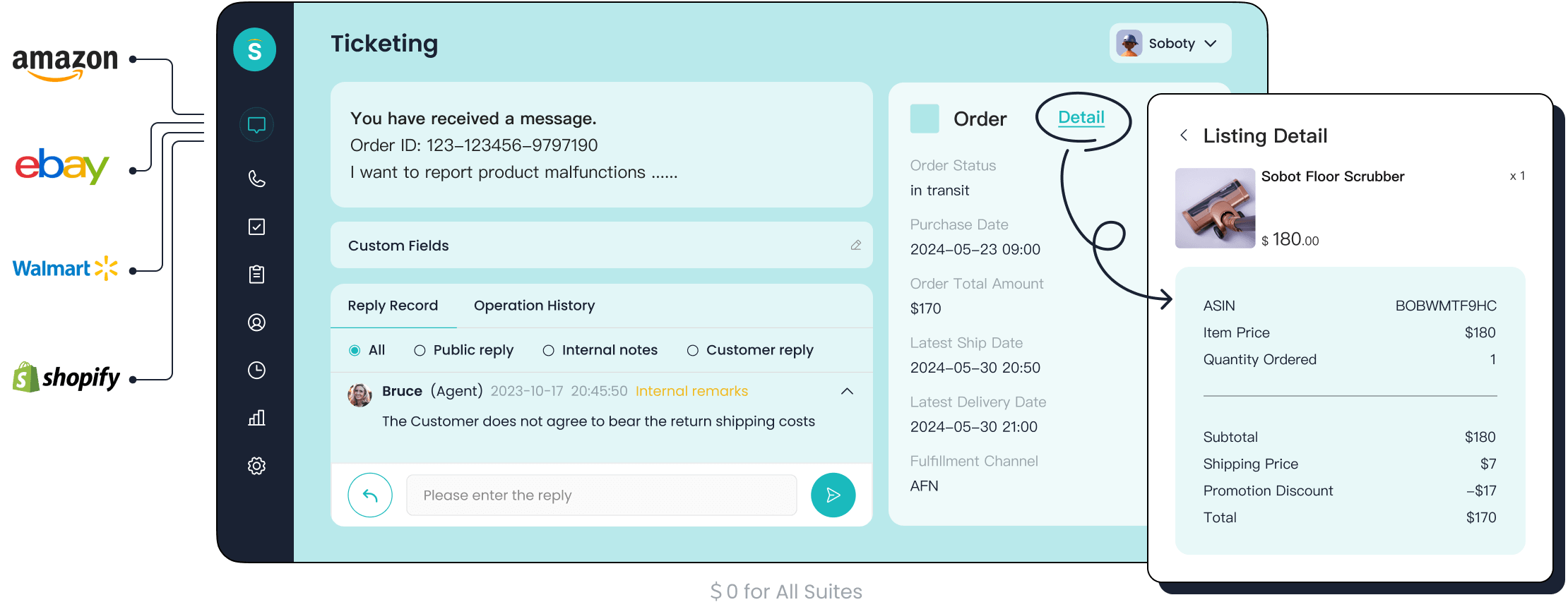
Automation is a cornerstone of modern ticketing systems. These tools handle repetitive tasks like ticket assignments and follow-ups, allowing agents to focus on complex issues. Sobot’s system uses custom triggers to route tickets automatically, saving time and boosting productivity. Additionally, prioritization features classify tickets based on urgency, ensuring critical issues receive immediate attention. Studies show that automation can deflect up to 60% of tickets, significantly reducing operational costs.
Integration with other customer service tools
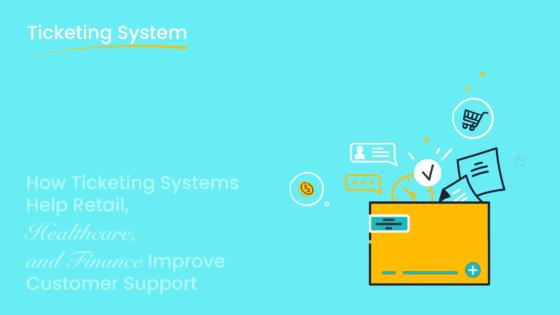
Integration capabilities make a ticketing system even more powerful. The best systems connect seamlessly with help desk software, e-commerce platforms, and CRM tools. Sobot’s ticketing system, for instance, integrates with Shopify, enabling businesses to manage customer inquiries directly from their sales platform. This interconnected approach enhances efficiency and ensures a consistent customer experience.
How Does a Customer Support Ticketing System Work?
The Ticket Lifecycle
Ticket creation and submission process

The lifecycle of a customer support ticket begins with its creation. Customers submit tickets through various channels like email, chat, or voicemail. A ticket records the issue and stores essential details such as the customer’s contact information and the nature of the problem. For example, Sobot’s ticketing system integrates multiple communication channels, ensuring that every inquiry is captured in one unified platform. This streamlined submission process reduces the chances of missed issues and sets the stage for efficient tracking and resolution.
Assignment and categorization of tickets
Once a ticket is created, it is categorized based on the type of issue and assigned to the appropriate agent. Categorization ensures that tickets are routed to the right team or individual, speeding up the issue resolution process. Sobot’s system uses custom triggers to automate ticket assignment, saving time and improving accuracy. For instance, high-priority tickets are flagged and sent to senior agents, ensuring critical problems receive immediate attention.
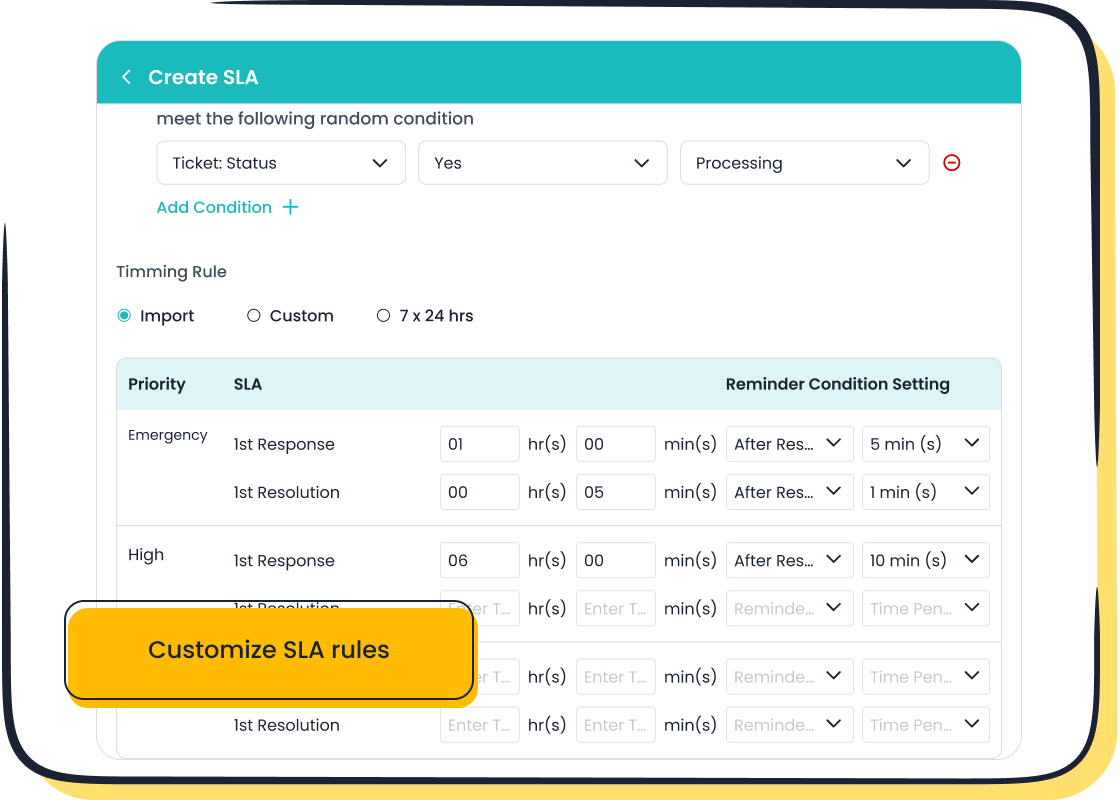
Tracking and resolution of customer issues
Tracking plays a vital role in the ticket lifecycle. It allows agents to monitor the progress of each ticket and ensures timely resolutions. Sobot’s ticketing system provides real-time updates and notifications, keeping both agents and customers informed. Agents can merge duplicate tickets, prioritize urgent ones, and use pre-written responses to resolve common issues faster. This efficient tracking process leads to higher customer satisfaction and faster ticket resolution.
Tools and Processes Involved
Automation in ticket routing and management
Automation simplifies ticket handling by reducing manual effort. Modern IT ticketing systems, like Sobot’s, use AI to analyze ticket content, predict potential issues, and automate responses. For example, routine tickets are resolved instantly without human intervention, cutting down mean time to resolution (MTTR) from hours to seconds. Automation also ensures 24/7 availability, allowing businesses to handle inquiries even during off-hours.
Collaboration between customer service teams
Effective collaboration is essential for resolving complex tickets. IT ticketing systems facilitate teamwork by providing shared access to ticket information and enabling real-time communication between agents. Sobot’s system integrates customer data and ticket history into one workspace, allowing teams to work together seamlessly. This collaboration improves efficiency and ensures that no ticket falls through the cracks.
Reporting and analytics for performance tracking
Analytics tools help businesses monitor ticket handling processes and identify areas for improvement. Metrics like ticket volume, agent utilization rate, and channel distribution provide valuable insights. For example, Sobot’s system offers trusted analytics that track performance and highlight bottlenecks. Businesses can use these insights to optimize workflows and enhance customer satisfaction.
| Metric | Description |
|---|---|
| Ticket Volume | Total number of tickets received in a certain period, indicating overall support workload. |
| Tickets per Customer | Average tickets received per customer, highlighting areas needing support. |
| Peak Hour Ticket Volume | Ticket volume during peak hours, aiding in staffing decisions. |
| Channel Distribution | Number of tickets across communication channels, guiding resource allocation. |
| Agent Utilization Rate | Time spent by agents on ticket-related activities, helping balance workload. |
Benefits of Using a Customer Service Ticketing System

Improved Organization and Efficiency
Centralized management of customer inquiries

A customer service ticketing system acts as a unified hub for managing customer inquiries. It consolidates communication from multiple channels like email, chat, and voicemail into one platform, ensuring no issue gets overlooked. This centralized approach simplifies ticket management and enhances transparency. For example, Sobot’s ticketing system integrates customer interactions across channels, allowing agents to access all relevant information in one place. Organizations can track metrics like response times and resolution rates, enabling data-driven decisions that improve service management.
Streamlined workflows for faster resolutions
Efficient workflows are essential for resolving tickets quickly. Automated processes in a support ticketing system reduce manual effort, ensuring tickets are routed to the right agents promptly. Sobot’s system uses custom triggers to classify and assign tickets based on urgency, saving time and boosting productivity. Effective ticket classification also allows teams to address similar queries collectively, further streamlining operations. Analytics tools provide insights into bottlenecks, helping businesses optimize workflows for faster response times and consistent support quality.
Enhanced Customer Satisfaction
Faster response times and personalized support
Faster response times are critical for minimizing customer frustration. A ticketing system flags high-priority issues, ensuring prompt attention. Communication tracking provides a detailed record of interactions, enabling agents to deliver personalized support. Sobot’s ticketing system enhances customer service productivity by automating routine tasks, allowing agents to focus on complex inquiries. This efficiency leads to quicker resolutions and higher customer satisfaction. Studies show that faster resolutions reduce wait times and improve customer loyalty, making ticket management a vital part of service management.
Consistent and reliable customer service
Consistency builds trust with customers. A help desk software like Sobot’s ensures reliable service by standardizing workflows and automating repetitive tasks. Pre-written responses and categorized templates help agents maintain uniformity in communication. Centralized inquiry management ensures every ticket receives attention, reducing errors and improving service quality. Businesses using ticketing systems often achieve higher customer satisfaction scores (CSAT), as streamlined processes lead to consistent support quality across all customer interactions.
Scalability and Growth
Handling increased customer inquiries as businesses grow
As businesses expand, the volume of customer inquiries rises. A customer service ticketing system enables scalability by automating workflows and improving efficiency. Sobot’s system consolidates customer requests, empowering support teams to resolve issues quickly without compromising service quality. Automation reduces operational costs, allowing businesses to handle growth while maintaining high standards of service management. Research shows that 61% of consumers are willing to pay more for better service, highlighting the importance of scalable solutions in driving revenue and loyalty.
Supporting remote and distributed teams
Remote and distributed teams require tools that facilitate collaboration and efficiency. A support ticketing system provides shared access to ticket information, enabling seamless teamwork. Sobot’s platform integrates customer data and ticket history into one workspace, ensuring agents can collaborate effectively regardless of location. Multilingual support and time-triggered actions further enhance scalability, making it easier for businesses to serve a global audience. By streamlining operations, ticketing systems help businesses adapt to growing demands and maintain consistent support quality.
Why Are Customer Service Ticketing Systems Important for Businesses?
Enhancing Customer Experience
Building trust and loyalty through efficient support
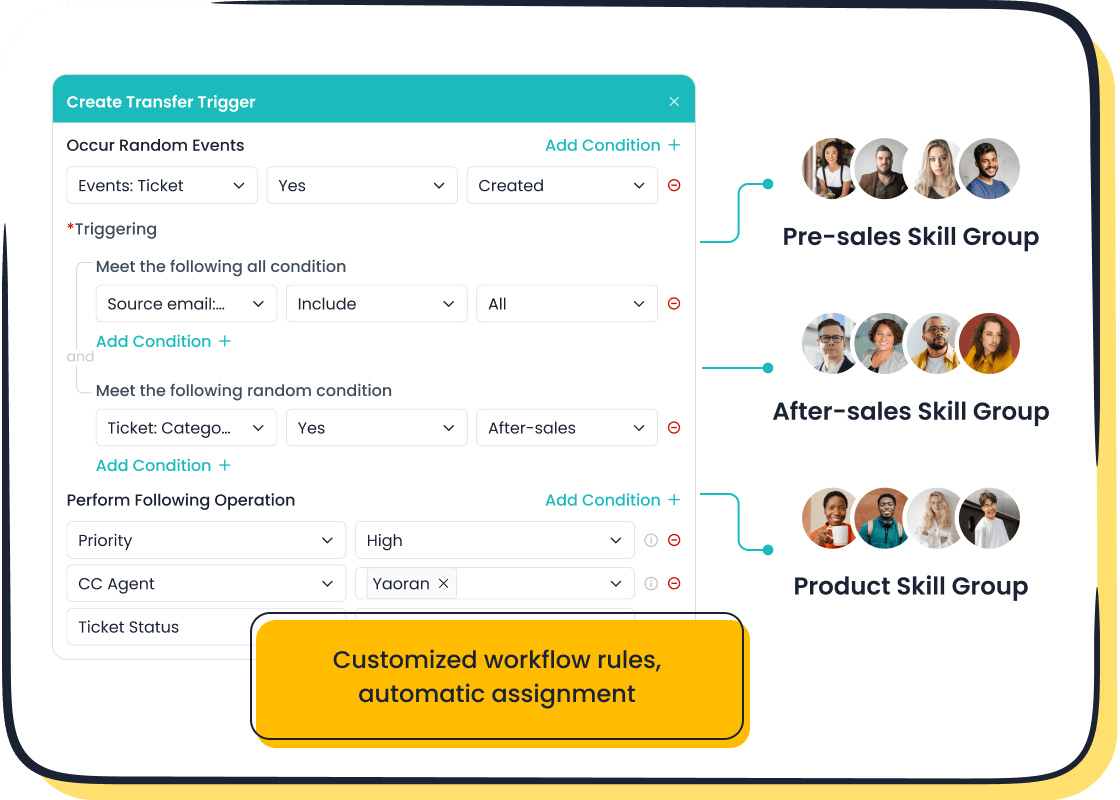
Efficient support builds trust and strengthens loyalty. When you resolve customer complaints quickly, it shows that you value their time and concerns. A customer service ticketing system ensures no issue gets overlooked. For example, Sobot’s ticketing system uses automation to prioritize urgent tickets, ensuring faster resolutions. This efficiency improves the customer service experience and fosters long-term relationships. Studies reveal that 86% of customers are willing to pay more for better service, highlighting the importance of trust in driving loyalty.
Reducing customer frustration with clear communication
Clear communication reduces frustration and enhances the customer experience. A customer support ticketing system centralizes all interactions, ensuring customers stay informed about their service request status. Sobot’s system integrates email, chat, and voicemail, providing real-time updates. This transparency minimizes confusion and keeps customers satisfied. For instance, sentiment analysis tools in IT ticketing systems gauge customer mood, allowing you to address concerns proactively.
| Feature | Description |
|---|---|
| Machine Learning and AI | Analyzes ticket data for patterns, predicts issues, automates responses, and suggests solutions. |
| Sentiment Analysis | Gauges customer mood to prioritize urgent issues, enhancing satisfaction. |
| Performance Analytics | Provides insights into support team performance, helping refine customer service strategies. |
Driving Operational Efficiency
Reducing manual tasks with automation
Automation reduces manual tasks, allowing your team to focus on complex customer queries. IT ticketing systems like Sobot’s automate ticket routing, assignment, and follow-ups. This efficiency lowers operational costs and improves productivity. For example, Sobot’s custom triggers route tickets to the right agents instantly, cutting response times. Automation also ensures 24/7 availability, enabling you to handle customer requests even during off-hours.
Enabling data-driven decision-making
Data-driven decisions improve service quality. IT ticketing systems provide analytics that track metrics like ticket volume and resolution times. Sobot’s system offers trusted analytics, helping you identify bottlenecks and optimize workflows. Unified data systems eliminate silos, ensuring real-time insights for better decision-making. Businesses using analytics tools often see improved customer satisfaction and operational efficiency.
Supporting Business Scalability
Adapting to growing customer demands
As your business grows, customer complaints and inquiries increase. A scalable customer support ticket system ensures you can handle this growth without compromising service quality. Sobot’s system adjusts automatically to manage higher workloads, preventing last-minute fixes during demand spikes. Its multilingual support and integration with e-commerce platforms like Shopify make it ideal for global operations.
Integrating with other business systems for seamless operations
Seamless integration with business systems enhances scalability. Sobot’s ticketing system connects with CRM tools and e-commerce platforms, unifying data for better operational visibility. This integration supports real-time insights and informed decision-making. Scalable infrastructure ensures you can expand product lines and geographic reach without overhauling existing systems.
| Evidence | Description |
|---|---|
| Scalable infrastructure | Enables businesses to manage increased customer demands, product lines, and geographic expansion without needing to overhaul existing systems. |
| Unified data systems | Essential for real-time insights and informed decision-making, integrating data from various functions to eliminate silos and enhance operational visibility. |
| Scalable system | Adjusts automatically to handle increased workloads, preventing the need for last-minute fixes during demand spikes. |
How to Implement a Customer Service Ticketing System

Choosing the Right Ticketing System for Your Business
Key factors to consider (e.g., features, scalability, cost)

Selecting the right customer service ticketing system requires careful evaluation of your business needs. Start by assessing the features offered. Look for tools like automation, SLA management, and integration with platforms like email or e-commerce systems. Scalability is another critical factor. A system should adapt as your business grows, handling increased ticket volumes without compromising efficiency. Cost also plays a significant role. Compare pricing models to ensure the solution fits your budget while meeting your requirements. For example, Sobot’s ticketing system offers automation, multilingual support, and integration with Shopify, making it a versatile and cost-effective choice for businesses of all sizes.
Evaluating Sobot's Ticketing System as a solution
Sobot’s customer service ticketing system stands out for its unified platform that integrates email, voicemail, and chat. It automates ticket routing and prioritization, reducing manual effort and improving response times. The system also supports multilingual communication, making it ideal for global businesses. With features like SLA reminders and trusted analytics, Sobot ensures efficient ticket management. Its scalability allows businesses to handle growing customer demands seamlessly. By choosing Sobot, you gain a reliable solution that enhances customer service and operational efficiency.
Best Practices for Implementation
Training your team on the new system

Proper training ensures your team uses the customer support ticketing system effectively. Begin with an overview of the system’s features, such as ticket categorization and automation tools. Provide hands-on sessions to familiarize agents with workflows and reporting tools. Encourage questions to address any uncertainties. For instance, Sobot’s intuitive interface simplifies training, allowing agents to quickly adapt to the system. Regular refresher courses can also help your team stay updated on new features, ensuring consistent service quality.
Setting up workflows and automation rules
Establishing workflows and automation rules streamlines ticket management. Start by defining categories for common issues and setting up triggers for automatic ticket routing. For example, high-priority tickets can be assigned to senior agents, ensuring faster resolutions. Sobot’s system allows you to customize workflows based on your business needs, such as time-triggered actions for follow-ups. Automation reduces repetitive tasks, enabling your team to focus on complex customer inquiries. This approach improves efficiency and ensures a consistent customer experience.
Measuring Success
Tracking key performance indicators (KPIs)
Measuring the success of your customer service ticketing system involves monitoring key metrics. Focus on indicators like first response time, average resolution time, and customer satisfaction score (CSAT). For example, Sobot’s analytics tools provide insights into ticket volume and agent utilization rates, helping you identify areas for improvement. Tracking these KPIs ensures your system delivers the desired results and enhances customer service quality.
Gathering feedback from customers and employees
Feedback is essential for refining your customer support ticketing system. Collect input from customers to understand their experience with your service. Use surveys to measure satisfaction and identify pain points. Similarly, gather feedback from employees to evaluate the system’s usability and effectiveness. Sobot’s platform simplifies this process by providing analytics and reporting tools, enabling you to make data-driven improvements. Regular feedback ensures your system evolves to meet changing customer needs.
Customer service ticketing systems are essential for businesses aiming to deliver exceptional support. These systems streamline communication, improve organization, and enable scalability as your business grows. By adopting a solution like Sobot’s ticketing system, you can automate workflows, reduce costs, and enhance customer satisfaction. The benefits extend beyond efficiency, fostering loyalty and improving employee morale.
| Benefit/Impact | Description |
|---|---|
| Reduced costs | Automation and centralized data management lead to significant cost savings. |
| Faster resolutions | Quicker issue resolutions minimize frustration and improve customer satisfaction (CSAT) scores. |
| Higher customer satisfaction | Efficient workflows and personalized support boost customer satisfaction and brand loyalty. |
| Increased customer retention | Satisfied customers are more likely to stay, leading to lower churn and reduced acquisition costs. |
| Enhanced brand reputation | Quality support fosters positive brand perception and recommendations. |
| Improved employee morale | Clear ticketing processes reduce stress and increase agent morale. |
| Enhanced collaboration | Internal teams can collaborate effectively on complex issues, leading to faster resolutions. |
Investing in a ticketing system ensures your customer service remains competitive and adaptable to future growth.
FAQ
What is the main purpose of a customer service ticketing system?
A customer service ticketing system helps you manage and resolve customer inquiries efficiently. It organizes communication, automates repetitive tasks, and tracks progress. For example, Sobot’s system ensures faster resolutions by routing tickets automatically, improving customer satisfaction and operational efficiency.
How does automation improve ticket management?
Automation reduces manual effort by handling tasks like ticket routing and prioritization. Sobot’s system uses custom triggers to assign tickets instantly, saving time and boosting productivity. Studies show automation can deflect up to 60% of tickets, lowering operational costs significantly.
Can a ticketing system handle multiple communication channels?
Yes, modern systems integrate multiple channels like email, chat, and voicemail. Sobot’s ticketing system consolidates all interactions into one platform. This unified approach ensures no inquiry gets overlooked and improves response times, enhancing the customer experience.
How do analytics in ticketing systems benefit businesses?
Analytics provide insights into performance metrics like ticket volume and resolution times. Sobot’s system offers trusted analytics to identify bottlenecks and optimize workflows. Data-driven decisions improve efficiency and customer satisfaction, helping your business grow.
Is Sobot’s ticketing system suitable for global businesses?
Yes, Sobot’s system supports multilingual communication and integrates with platforms like Shopify. These features make it ideal for businesses serving global audiences. Its scalability ensures you can handle growing customer demands without compromising service quality.
See Also
The 10 Most Effective Customer Service Tools for 2024
Key Attributes of CRM Software for Call Centers
Excelling at Live Chat Within Retail Environments